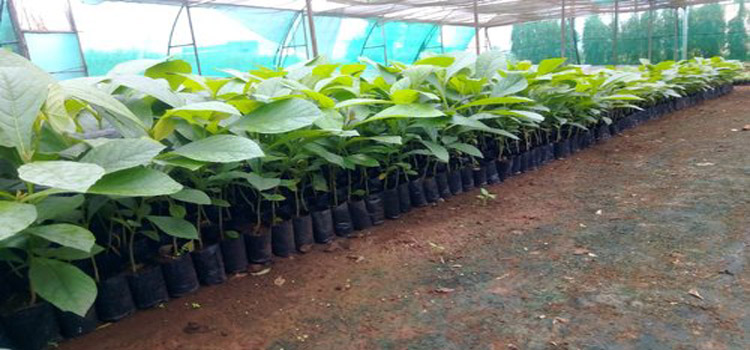
sagwan plantation in India
We are providing sagwan plantation in pune, for more details call us now:9453278562, 9651263333 or mail us now info@indiaplantation.com
Teak manors have been generally settled all through the tropics to create brilliant timber in trees of good development and stem structure. Numerous variables influence the accomplishment of teak planting programs including site, seed supply and seed quality, administration and other organic elements, for example, creepy crawlies. Site is the essential component impacting ranch development and advancement. Development and yield of manors developed in various site qualities, inside and outside the teak district is outlined. With right site determination, development and yield can be enhanced more than 100 %. The structure of suitable teak destinations is checked on. Seed supply is a variable constraining planting scale and the nature of the estate, particularly so in nations where teak is a fascinating. Seed prerequisite in different manor alternatives is organized and the impact of seed sources (provenances) and enhanced seed on development and nature of ranches is illustrated. A transient system for enhanced seed and clonal stock generation is proposed. Silvis social administration of teak manor hones in weeding, diminishing and creepy crawly and flame insurance for development and quality change is looked into.
The primary goal of teak ranch foundation is to create brilliant timber in trees with great or adequate development rates. To accomplish these goals, the planting site must be suitable for the development and advancement of teak. Teak ranches have been set up all through the tropics, inside and outside its characteristic dispersion range. This covers an extensive variety of climatic conditions, i.e. from the central sort to the sub-tropical sort with a scope of precipitation and temperature of 500-3,500 mm and 2-48C (least and most extreme extent) individually. Soil conditions additionally differ from barren acidic to fruitful alluvial. An extensive variety in development and other tree characters, for example, stem structure, method of stretching, blossoming propensity and wood nature of the manor regularly comes about.

Sagwan Plantation in India
We offer all kinds of Sagwan Plantation in India for Plantation contact us :9670901555 , 7080092222 or mail- info@plantwala.com
Sagwan (Tectona grandis) is one of the most well known timbers of the world. And it belongs to verbenaceae family.It knows as the “Burmese teak“. Tectona grandis is a large, deciduous tree that occurs in mixed hardwood forests.
It has small, fragrant white flowers and large papery leaves that are often hairy on the lower surface. Generally, a teak plant grows to a height 25-30 ft and attains a girth of 30-35 inches. Sagwan prefers moist, warm tropical climate.It can withstand extremes of temperature, but maximum and minimum shades temperature of 39 to 440 °C and 13 to 170 °C.
Pest and Dieseases management
- Termites :- Gain entry from the injured part of the roots/stem near the ground and seriously damaged the xylem, often resulting in the death of the plants. Treated with chloropyriphos 2.5 ltr. per acre or 4 to 5ml per plants twice in a year with frequent irrigation should be arranged.
2. Stem Borer :- Spread Phorate – 10G with 8kg per acre upto second year of plantation or inject kerosene oil in stem 2 to 5 ml per hole.
3. Pygeria :- Spray Carbyl 50%w.P 250 – 300gm with 2 ppm ratio or 400 – 500ml Monocrotophos 36SL per acre.
4. Bark Insects :- Bordeaux paste upto 4 feet from ground level in month of march.
5. Leaf Defoliators :- Spray Monocrotophos 500 – 600ml, Chloropyriphos + cypermethrin 750ml, Lara or Hiltron 1.5% V.V. per acre. Attack noticed in month of July.
6. Mites :- Spray with 2ml Roger 30 E.C or Matasystox per ltr of water and to be repeated after interval of 15 days.
DISEASES
1. Color Rot :- Color Rot cause death of plants through roots. Treat roots with Emisan -6, 4 to 5gm per plant in deep root zone area.
2. Wilt :- It seems first time in Poplar plantation during May & June. Spray with 500 gm per acre sulphar-80% W.P with frequent irrigation in these months.
DEFICIENCIES
1. Zink Deficiency :- Its quite common in many areas and its shown yellowing of intervenal space of the leaves. Zink Sulphate – 21% applied with 10kg per acre.
2. Sun Scratches or Fire Damaging :- The bark becomes cancured in patches and may flick off. The scars are usually in both cases on one side.
Tissue cultivation allows for faster planting cycles of between 7 to 9 years as per demand of the market, rather than 20-25 years. This proven method also delivers consistent tree quality which in turn gives higher yields and quality. Good & Safe Investment and Big Return in 7-9 Yearshilly forests in Southeast Asia and is a deciduous tree.
WOOD
- Heartwood is yellowish in colour. It darkens as it ages, Sometimes there are dark patches on it.
- Sapwood is whitish to pale yellowish brown in colour. It can easily separate from heartwood.
- Wood texture is hard and ring porous.
- Density is 720 kg/m3.
—For more Information contact us: 7379285555, 9453278562 or mail- info@plantwala.com —
